MYC GHG Emissions Calculator
A tool to quantify urban mobility GHG emissions
Purpose
MYC Emissions Calculator is an open source online tool that calculates GHG emissions induced by the transport activity on a given territory (city or country scale).
It relies on the excel-based calculator created by the Institute for Energy and Environmental Research in cooperation with the German and French development agencies GIZ and AFD, for the MobiliseYourCity partnership.
It helps developing countries and cities calculating transport GHG emissions for a "reference year" (when you start the calculation).
In addition, it models a "Business-as-usual scenario (BAU)" : if no actions is taken and considering the expected growth of the population and trips, what can we expect from GHG emissions about 30 years after. That scenario is to be compared with a "climate scenario" with emission reductions from mitigation measures.
Progress
FabMob is working on the transformation of the excel-based calculator into the online tool, step by step in order to make it a digital common, easy to access and easy to use for a community.
You can read our first scoping note after analyzing the excel-based tool :
MVP1
An MVP has been defined during the first quarter of 2022, the web version began by focusing on:
- Targeted at consulting firms helping cities (not countries)
- Focused on GHG estimation for BAU (First sheet, 1A)
- Focused on passengers (no freight)
With the following features:
- Select country/city and reference year
- Create used accounts to specify profile type, save and track data
- Proper presentation of the tool
- A welcome page, with description of the tool, its goals and its relation to MYC
- Compute GHG emissions (using the ASIF methodology) with the following parameters:
- Vehicules-kilometers travelled (vkt)
- Occupancy and average trip length per vehicle type
- Vkt per fuel type
- Average energy consumption and energy efficiency
- CO2 impact of electricity
- Improve the way data is filled
- Progress bar to track data collection journey
- Help in the choice of category of transport
- Guide users in their inputs
- Add a contact email or a way of reaching the MYC team
- Predict emissions increase based on economic and travel growth between now and 2050 if nothing is done (Business As Usual)
- Visualize output data as graphs
- Ease the understanding of computations
MVP2
In 2023, the version MVP2 was released, complementing the scope to match the functionalities of the excel spreadsheet. The following features were included:
- Complete rework of the Inventory & BAU steps described in the first MVP. A project is now divided in three steps
- An inventory, focused only on the reference year. This is where vehicles and fuels are defined
- A Business as Usual (BAU) scenario, built on top of the inventory
- One or more Climate scenarios, to be compared to the BAU
- Each step includes a small results page, to identify potential problems in data
- Full rework of the User Interface
- Match the features of the latest version of the offline tool (excel)
- This includes an update on computation methods, filling option, new types of fuels such as hydrogen and an update of default emission factors
- Creation of an educational path based on the MYC guides and notes from the Excel tool, including:
- Explanatory and illustrated texts of various calculation methods
- Description of the required data for each step
- Detailed tooltips for each parameter
- Concise formulas for intermediate calculations
- Guidance on how data can be filled
- Addition of a source entry and management system for each data point
- Addition of a note-taking field on each page, providing a space to summarize assumptions and back-of-the-envelope calculations
- Unlike MVP1, the tool now supports the input of climate scenarios, with or without prior calculations
- Addition of a page for comparing different scenarios
- This page contains a set of configurable graphs, exportable as PNG images or CSV files
- It also includes a summary of the sources used in the project
- Finally, it allows for downloading all data entered into the tool in CSV format. This export facilitates the transition from the online tool to Excel if necessary
- Similar to MVP1, a project can be "validated", making it visible to other users
- Unlike MVP1, population and GDP data have been removed since they are not used in emissions calculations
Version 2.1 - Community Edition
2023 also includes the release of the version 2.1 - Community Edition, built with volunteer work from various contributors
- Redesign of the tool's introduction page, now more visually appealing
- Addition of new illustrations, icons, and a typeface in line with the MYC graphic design
- Significant work has been done to standardize all interface pages, accompanied by various visual enhancements
- For example, uniform cell sizes in tables and improved handling of text and number overflows have been implemented
- These improvements affect all visible pages, as well as dynamic elements like tooltips and popups
- In addition to numerous interface changes, a few bugs have been fixed:
- Added support for HTTPS for a more secure browsing experience
- Fixed a bug that prevented project creation under certain conditions
- Corrected an incorrect vkt calculation based on the order of inventory filling in "fleet" mode
- Fixed project deletion
Organisations utilisatrices ou intéressées pour utiliser la ressource : AFD, Cetud
Contributeur(s) : Alex Bourreau, Adrien Bihorel, Ferdinand Barbier
Tags : international, GHG, cities, countries, Collectivité, FabMob2022, FabMob2023
Catégories : Logiciel, Données, Connaissance, Communauté
Thème : Urbanisme et ville, Logiciel Libre, Collectivité, Africa
Référent : Alex Bourreau
Défi auquel répond la ressource : Accompagner une collectivité à ouvrir un maximum de ressources et construire un kit d'aide à l'innovation, Faciliter le partage la gestion la maintenance la comptabilité des émissions polluantes et de GES des véhicules
Personnes clés à solliciter :
Autre commun proche :
Richesse recherchée :
Compétences recherchées :
Communauté d'intérêt : Communauté des acteurs en Afrique
Type de licence : CC BY-NC-SA 4.0, MIT Licence
Conditions Générales d’Utilisation (CGU) :
Niveau de développement : POC et 1er client
Lien vers l’outil de gestion des actions :
Lien vers l’outil de partage de fichiers :
Besoins :
Prochaines étapes :
Documentation des expérimentations :
Autres informations
Liste des acteurs qui utilisent ou souhaitent utiliser ce commun : aucun pour le moment
Liste des CR d’atelier en lien avec ce commun :
Complementary information on the project[modifier | modifier le wikicode]
1. GHG emissions calculator[modifier | modifier le wikicode]
The excel-based tool is built around 12 tabs :
- Introducing the tool
- Get started
- Filling out the inputs and visualizing the results
- 1A. Input base and BAU
- 1B Top-Down Validation
- 2A Input Climate Scenario for Passengers
- 2B Input Climate Scenario for Freight
- 3. Overview of results
- Tabs for intern calculation
- 4A. Calculation BAU
- 4B. Calculation Climate Scenario
- Complementary data
- 5. Defaults values
- 6 Defaults parameters
- Sources and abbreviations
- Referencing
2. MobiliseYourCity partnership & GHG emissions calculation methodology[modifier | modifier le wikicode]
MobiliseYourCity is an international partnership whose main activity is the development of Sustainable Urban Mobility Plans (SUMP) and National Urban Mobility Policy/Investment Programmes (NUMP). Its methodology is characterised by its very operational aspect (these plans serve as project preparation to raise funds for implementation) and the focus is on data collection, scenario modelling and quantification of impacts on the Sustainable Development Goals.
In the frame of climate-related initiatives funded by donors internationally, one of the main issues is to measure GHG emissions to be able to account for the mitigation impact of the projects. It is the case for instance in many urban mobility-related programmes and projects, of which the MobiliseYourCity (MYC) initiative is an example, where GHG emissions are a major indicator developed according to the MRV (Measure-Report-Verify) approach.
There are several ways to calculate GHG from urban mobility. The ASIF methodology seems to be the most appropriate within the MYC context (where GHG emissions are one key element of the Sustainable Urban Mobility Plan), requiring Vehicles Kilometres Travelled (VKT) and average fuel economy (FE) of each vehicle type.
The ASIF methodology: the most common way to reach MRV for the transport sector[modifier | modifier le wikicode]
The ASIF approach is widely used by many stakeholders to quantify energy use and GHG emissions from the transport sector. The main components are traffic activity (VKT) and GHG emission factors (blue squares in the figure below).
There are three main ways for getting the average fuel economy of the vehicle fleets in cities:
- Performing a survey towards vehicle users to require their declared fuel economy; such declared values need quite a large sample for each vehicle type considered to get an accurate value;
- Using an emissions inventory harmonized tool that derives average FE (Fuel Economy) from laboratory measurements on typical driving conditions for each vehicle type;
- Producing data with specific app like GECO Air or devices.
Each methodological approach have their own advantages and drawbacks (Table 1).
| CO2 emission factors from : | Pros | Cons |
| Fuel Economy Survey | - More realistic value matching local context
- Getting technical information about vehicle fleet simultaneously |
- Declared values
- Large sample needed for each vehicle type to get good accuracy - Timescale to get results - Surveys are expensive |
| Emission Inventory Tool | - Real CO2 measurements
- Robust "MRV-compatible" methodology - Allows for future projections for certain tools - Incentive for all MYC countries/cities to collect the same information - Pollutants also included - Comparability across MYC countries/cities |
- Requires the technical specifications of the vehicle fleet
- Cost of using the tool when it comes with proprietary rights - Need of additional information about average speeds or level of congestion |
Table 1 : Pros and cons of surveys and IT tool to get CO2 emission factors
This note focuses on the pros and cons of getting fuel economy information by using an emission inventory tool.
Why a harmonized tool ?[modifier | modifier le wikicode]
Using an emission inventory tool to convert VKT into CO2 brings several benefits compared with getting fuel economy values from a survey (see table 1).
There would be a need to be able to gauge and compare the efforts made by each country/city, check the transparency of each results put forward and assess the quality of the efforts made to mitigate GHG emissions.
For example, if a country states 100 MtCO2 saved and another 300 MtCO2 saved, a robust approach requires that the country saving 300 MtCO2 really saved 3 times more than the other country. A harmonized methodological approach would make sure this is possible. If each country develops its own inventory tool to quantify national GHG emissions from the urban transport sector, there is a high risk that the results obtained will not be comparable with the results from other tools. The essence of MRV procedure, making sure that results are harmonized and comparable, would then be missed.
By having a harmonized GHG quantification tool, one would make sure that methodologies and results would be more transparent and more easily comparable. It would also provide a strong incentive to collect the same information in all countries/cities engaged in clean urban transportation strategies and projects, which will be useful to characterize the urban transport sector and calculate GHG emissions.
Hence the recommendation to either adapting an existing tool or creating one adapted to developing countries context. Training would be provided by the tool editor and detailed user guide would be available
Are other tools available?[modifier | modifier le wikicode]
As detailed in ADEME’s report on MRV-GHG strategies for Morocco, a short list of potential tools has been put forward that would fit for these purposes. Such a harmonized GHG tool should build on on the most adequate tools that are widely used across Europe to perform transport emission inventories:
Other institutes like IFEU (Institut für Energie- und Umweltforschung), could also be considered.
GIZ has already delivered a version of HBEFA to perform GHG emission inventories in Chinese cities. A slightly modified version of this tool would potentially be usable within other geographies.
As per COPERT, it is widely used by many stakeholders at the national and local levels, as it is freely available and all emission factors calculation equations are publically available.
Being widely used for emission inventories, such tools would qualify for MRV compatible strategies.
Abbreviations[modifier | modifier le wikicode]
| ADEME | Agence de l’Environnement et de la Maîtrise de l’Énergie |
| ASIF | Activity Structure Intensity Fuel |
| CO2 | Carbon dioxyde |
| FE | Fuel Economy |
| GHG | Greenhouse gas |
| MRV | Measurement, Reporting and Verification |
| MRV-GHG | Measurement, Reporting and Verification for greenhouse gas |
| MYC | MobiliseYourCity |
| NAMA | Nationally Appropriate Mitigation Action |
| NUMP | National Urban Mobility Planning |
| SUMP | Sustainable Urban Mobility Plan (PDU) |
| VKT | Vehicle kilometres travelled |
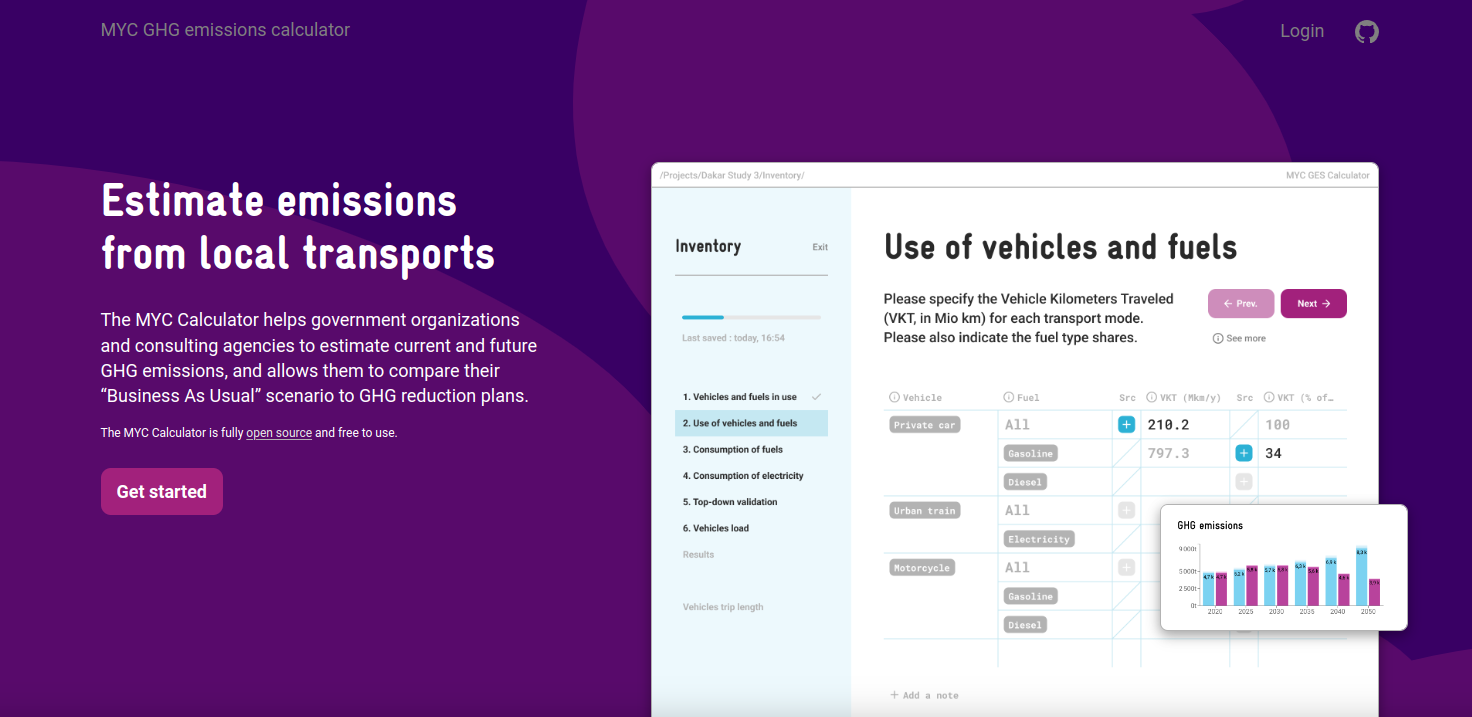
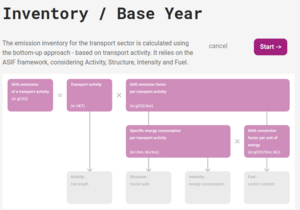

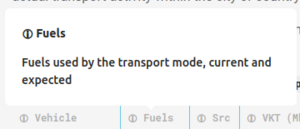
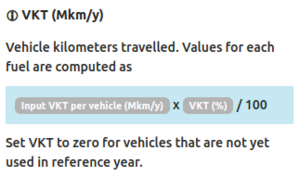
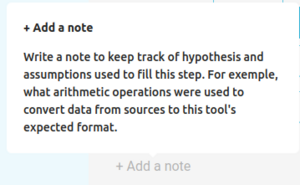
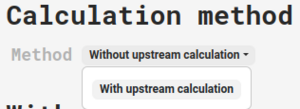
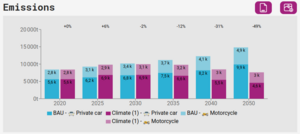
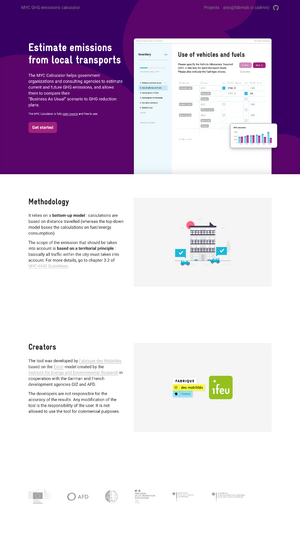
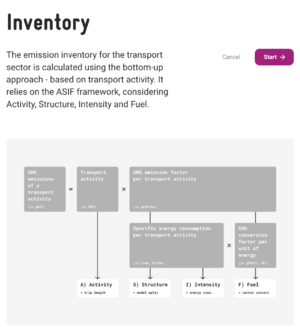
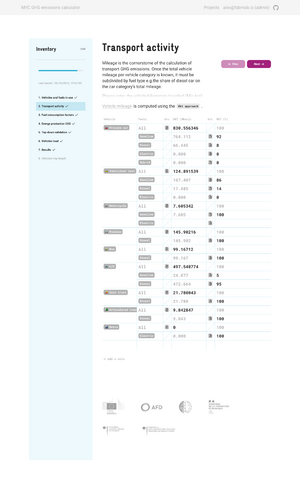
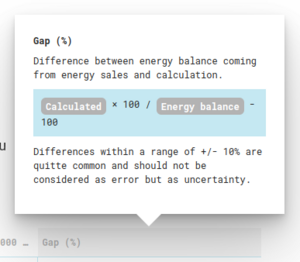
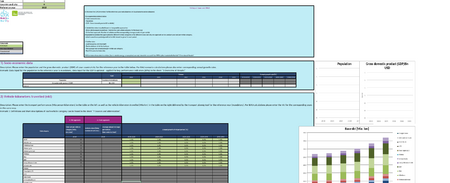
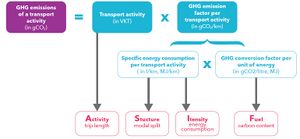
 Français
Français English
English Italiano
Italiano